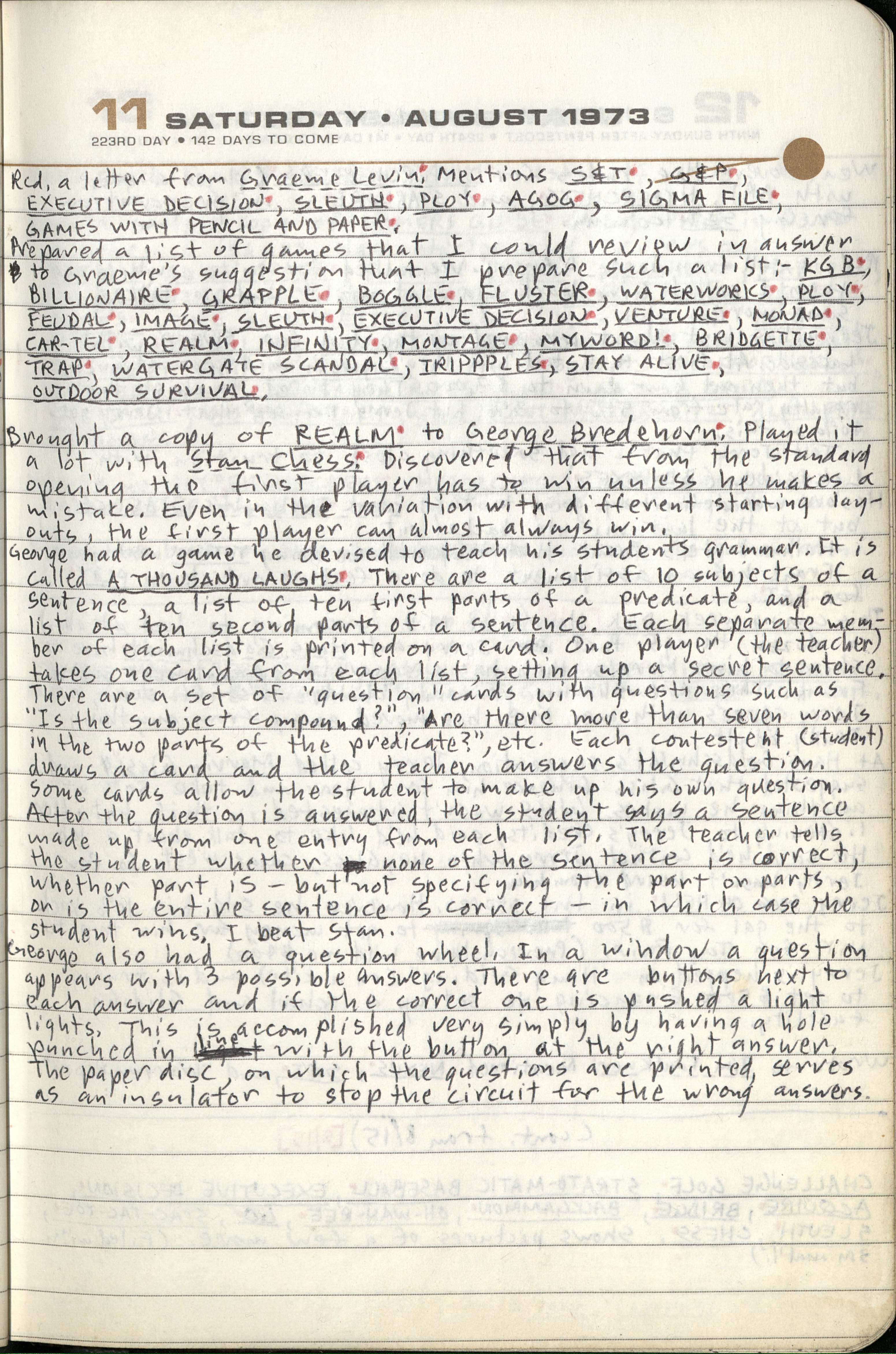1973_Sackson_243_August 11.jpg: Page #1
Original title: 1973_Sackson_243_August 11.jpg

Transcription
11 Saturday - August 1973
223rd day - 142 days to come
Rcd. [received] a letter from Graeme Levin. Mentions S&T, G&P,
EXECUTIVE DECISION, SLEUTH, PLOY, AGOG, SIGMA FILE,
GAMES WITH PENCIL AND PAPER.
Prepared a list of games that I could review in answer
to Graeme's suggestion that I prepare such a list:- KGB,
BILLIONAIRE, GRAPPLE, BOGGLE, FLUSTER, WATERWORKS, PLOY,
FEUDAL, IMAGE, SLEUTH, EXECUTIVE DECISION, VENTURE, MONAD,
CAR-TEL, REALM, INFINITY, MONTAGE, MYWORD!, BRIDGETTE,
TRAP, WATERGATE SCANDAL, TRIPPPLES, STAY ALIVE,
OUTDOOR SURVIVAL.
Brought a copy of REALM to George Bredehorn. Played it
a lot with Stan Chess. Discovered that from the standard
opening the first player has to win unless he makes a
mistake. Even in the variation with different starting layouts,
the first player can almost always win.
George had a game he devised to teach his students grammar. It is
called A THOUSAND LAUGHS. There are a list of 10 subjects of a
sentence, a list of ten first parts of a predicate, and a
list of ten seconds parts of a sentence. Each separate member
of each list is printed on a card. One player (the teacher)
takes one card from each list, setting up a secret sentence.
There are a set of "question" cards with questions such as
"Is the subject compound?", "Are there more than seven words
in the two parts of the predicate?", etc. Each contestant (student)
draws a card and the teacher answers the question.
Some cards allow the student to make up his own question.
After the question is answered, the student says a sentence
made up from one entry from each list. The teacher tells
the student whether none of the sentence is correct,
whether part is - but not specifying the part of parts,
or is the entire sentence is correct - in which case the
student wins. I beat Stan.
George also had a question wheel. In a window a question
appears with 3 possible answers. There are buttons next to
each answer and if the correct one is pushed a light
lights. This is accomplished very simply by having a hole
punched in right line with the button at the right answer.
The paper disc, on which the questions are printed, serves
as an insulator to stop the circuit for the wrong answers.